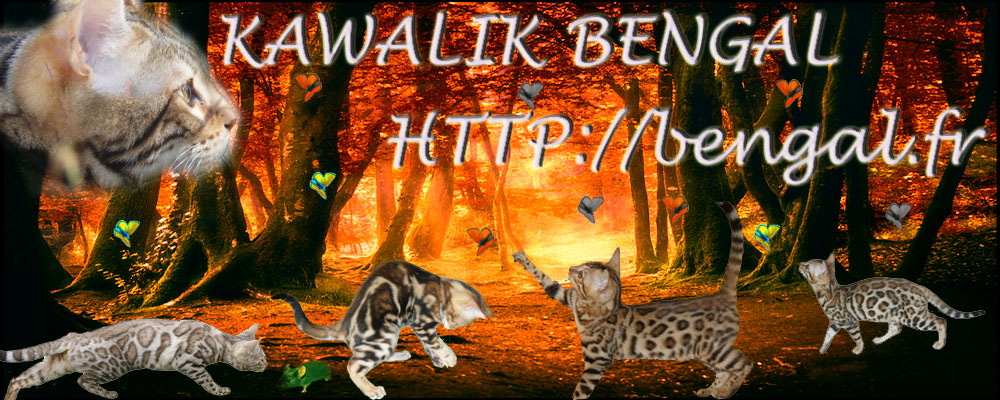
Kawalik Bengals, breeding bengal in France
Welcome to Kawalik Bengal !!
Asian leopard cat (ALC)/ Prionailurus Bengalensis
Prionailurus bengalensis, still recently called Felis bengalensis, is the most common Asian feline, although it is classified in appendix I or II of the CITES (Convention on International Trade in Endangered Species, cf. http: // www.cites.org) because of the threat hanging over its ecosystem . Geographically speaking, the Prionailurus bengalensis has a large-scale distribution. So, the « leopard cat” can be found from India to Siberia, and naturally to China and Japan ! We can thus count a dozen Sub-species (different from a genetic point of view and thus phenotypic), which result from adaptation to their environment. (Variation in size, density and colour of the coat).
Prionailurus bengalensis bengalensis was the species which was used for the first attempts of hybridization. They originated from a research program in the United States on the feline leucose. At the time, they believed that this small feline was naturally immunized against this disease. These individuals were then left to an American geneticist (Jean Mill) who started in the 60s a program of breeding whose the purpose was to obtain a cat with a domestic character but with a wild appearance. If the males of the first generation were systematically sterile, most of the females allowed the development of a new race of cat: the bengal.
You will thus understand that due to this origin, the bengal isn’t really a cat like any other cat and that their "wild» genes make them the centre of interest. There is thus a real debate between fascinated breeders and captivated curators.
Prionailurus bengalensis is indeed threatened with extinction (as is case with all other Felinae, except for the cat!!) but, if certain subspecies are clearly threatened, it is not the case for all of them, because they can be found in large numbers in certain countries. Obviously, it is recommended to maintain this species in its original environment and to fight against the regression of their natural environment, the business of furs, and so on... Having said that, the programs of reproduction in captivity, whose purpose is to re-introduce the species in their natural environment, are rather illusory at the moment.
At present, many breeders still use Prionailurus bengalensis in their program of breeding in order to perfect their lineages of bengals and it is desirable that these genetic contributions continue because the race is recent. Those who are interested in breeding should keep in mind that the reproduction of the " leopard cat " can’t be made without a certificate of capacity of breeding, that all the individuals must have been born in captivity and that the acquisition of an animal must always be carefully considered; all the more so when the animal is not a pet.
Our ALC, Yorkicat Korfou, RIP 15.04.2010-22.03.2021
In short, today, the bengal is comfortably settled in ours armchairs and our only care is to enjoy them… Its admittance in the TICA only dates back to 1990 and only includes the subjects from the 4th generation.
The most common colours at present are Brown, Snow and Silver. Two types of motives are accepted: the spotted (see rosetted) and the marble. In both cases, what is important is an extreme contrast between the spots and the background colour.
We invite you to go to our page kitten to discover our little wonders…






